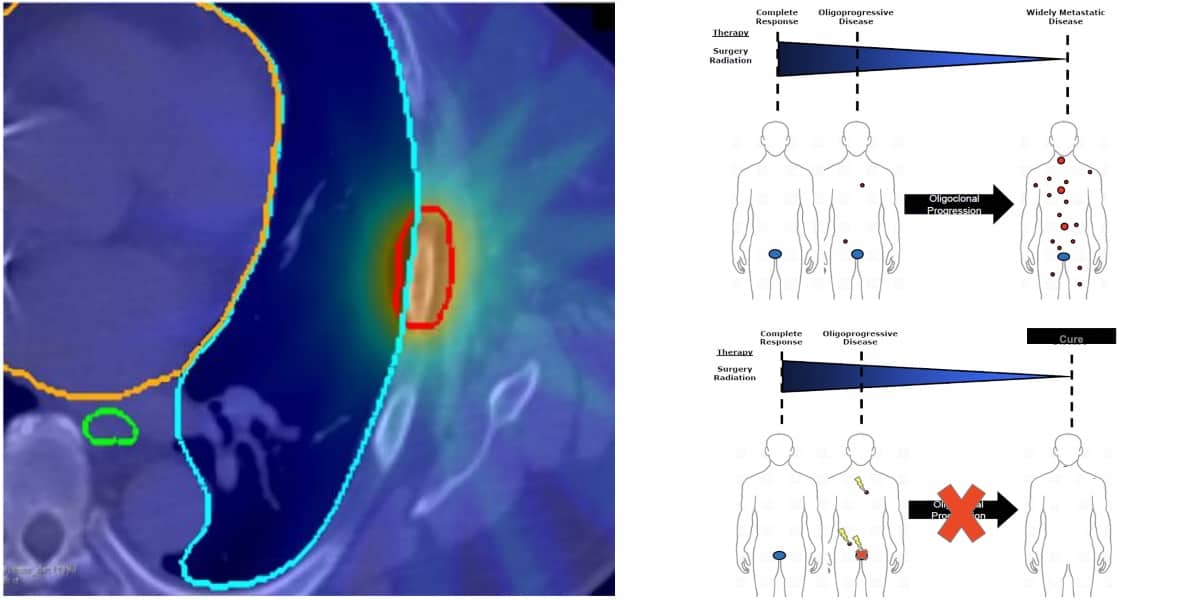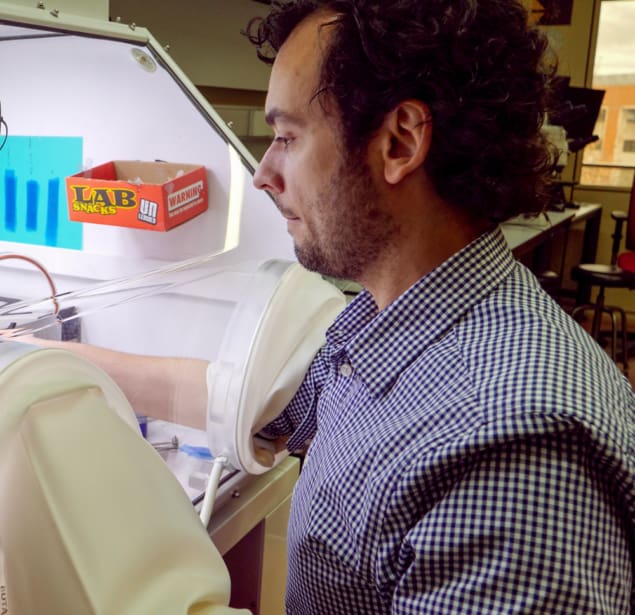A photonic device that radiates light only in one direction has been created by researchers in China and the US. Chao Peng, Marin Soljačić and colleagues at Peking University, the Massachusetts Institute of Technology and the University of Pennsylvania created their device by carefully tailoring the shape of a set of etched silica bars – thereby using topology to modify a curious effect that was predicted 90 years ago. The optical device could have multiple applications in optoelectronics.
A key challenge in creating optical circuits is that light will happily travel in both directions through optical devices – which causes unwanted effects. Current solutions such integrating a mirror to reflect light travelling in the wrong direction tend to be bulky, inefficient or difficult to fabricate. Now, researchers in China and the US have put a topological twist on an effect first proposed in 1929 and created a photonic crystal that rediates light in only one direction.
In 1929, John von Neumann and Eugene Wigner discovered that some solutions of the Schrödinger equation for an electron in a potential well involved bound states that nevertheless had enough energy to escape the well. Creating experimental systems that exhibit these “bound states in the continuum” (BICs) was not possible at the time so they remained a mathematical curiosity for several decades. Beginning in the 1970s, researchers realized that the same physics applied beyond quantum mechanics and more broadly to systems of waves. Since then, BICs have been observed in light, sound and water waves as well as surface waves in graphene.
A perfect mirror
In 2013, a team led by Soljačić used BICs to produce a new type of perfect mirror that could trap and reflect light without ever absorbing it. In 2017, Boubacar Kanté at the University of California, San Diego and colleagues extended the concept from controlling the trapping of light to tailoring its emission. They produced an optical “supercavity” from a square lattice structure of indium gallium arsenide phosphide. When pumped at optical frequencies, their structure supported a standing wave at around 1550 nm (the wavelength most commonly used in telecommunications). This was used to create a very narrow linewidth laser that could prove useful in optoelectronics. However, the emission is spatially symmetric: just as many photons are radiated downwards from the lattice as upwards.
In the latest research research, Soljačić and colleagues in the US and China developed a neat trick to produce an device that sends radiation in only one direction. The team fabricated a periodic array of 500 nm deep and 200 nm wide silicon bars approximately 1 micron apart on a silica substrate. If the bars had been created perpendicular to the substrate, simulations suggested the system would behave as a BIC when excited with 1550 nm light. Instead, however, the researchers tilted the bars slightly, disrupting the BIC and allowing radiation to leak out.
Topological considerations meant that radiation radiated upwards had to have the opposite polarization to radiation emitted downwards. When the bars had been tilted far enough, any radiation radiated downwards would have to be both left-circularly-polarized and right-circularly-polarized at the same time. As no radiation could ever satisfy this constraint, radiation should not be emitted downwards – and least for a perfectly constructed device. The actual device sent thousands of times more optical power upwards than downwards.
“Beautiful work”
Soljačić and colleagues were unavailable for comment, but Kanté – now at the University of California, Berkeley – describes the research as “beautiful work”. “This is probably the highest contrast I have ever seen in a passive structure,” he says. “Normally the ratio is one to two, three or four.” He believes the most interesting aspect is the underlying theory the researchers use to break spatial symmetry and show how radiation can be cancelled in one direction.

Photonic crystals follow a straight path to absolute darkness
He adds a note of caution, however: “Unidirectional does not mean non-reciprocal: even if it only sends signals out in one direction it will still receive them [from both directions],” he says. “To avoid interference this antenna would still require an isolator.” This could have its own advantages, however: “Sometimes you want to be able to couple light efficiently into an optoelectronic chip or back out of it using something called a grating coupler,” he explains. “It could be very useful for that.”
The research described in Nature.









